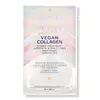What's inside
What's inside
 Key Ingredients
Key Ingredients

 Benefits
Benefits

 Concerns
Concerns

No concerns
 Ingredients Side-by-side
Ingredients Side-by-side

Water
Skin ConditioningGlycerin
HumectantEthylhexyl Palmitate
EmollientPropanediol
SolventNiacinamide
SmoothingCaprylyl Methicone
Skin ConditioningButylene Glycol
HumectantCaprylic/Capric/Myristic/Stearic Triglyceride
EmollientSorbitol
HumectantPolyglyceryl-3 Methylglucose Distearate
EmulsifyingSqualane
EmollientCetyl Ethylhexanoate
EmollientCaprylic/Capric Triglyceride
MaskingBakuchiol
AntimicrobialDiphenylsiloxy Phenyl Trimethicone
Skin ConditioningGlyceryl Stearate Citrate
EmollientCetearyl Alcohol
EmollientDipropylene Glycol
HumectantAcrylates/C10-30 Alkyl Acrylate Crosspolymer
Emulsion StabilisingHydroxyacetophenone
AntioxidantTromethamine
BufferingHydroxypropyl Starch Phosphate
Cetearyl Glucoside
EmulsifyingCaprylyl Glycol
EmollientTrehalose
HumectantAllantoin
Skin ConditioningDisodium EDTA
Adenosine
Skin ConditioningEthylhexylglycerin
Skin Conditioning1,2-Hexanediol
Skin ConditioningSodium Hyaluronate
HumectantCarnitine
CleansingXylitylglucoside
HumectantGlucose
HumectantAnhydroxylitol
HumectantXylitol
HumectantDipotassium Glycyrrhizate
HumectantLimnanthes Alba Seed Oil
Skin ConditioningSilk Amino Acids
HumectantHydrolyzed Hyaluronic Acid
HumectantSchisandra Sphenanthera Fruit Extract
AntioxidantMaltodextrin
AbsorbentBeta-Glucan
Skin ConditioningHydrogenated Lecithin
EmulsifyingTocopherol
AntioxidantAcetyl Hexapeptide-1
Skin ConditioningMethyl Glucose Sesquistearate
EmollientPolyglyceryl-10 Oleate
Skin ConditioningSoluble Collagen
HumectantMagnesium Chloride
Glutathione
Madecassic Acid
Skin ConditioningAsiaticoside
AntioxidantAsiatic Acid
Skin ConditioningCentella Asiatica Extract
CleansingMadecassoside
AntioxidantWater, Glycerin, Ethylhexyl Palmitate, Propanediol, Niacinamide, Caprylyl Methicone, Butylene Glycol, Caprylic/Capric/Myristic/Stearic Triglyceride, Sorbitol, Polyglyceryl-3 Methylglucose Distearate, Squalane, Cetyl Ethylhexanoate, Caprylic/Capric Triglyceride, Bakuchiol, Diphenylsiloxy Phenyl Trimethicone, Glyceryl Stearate Citrate, Cetearyl Alcohol, Dipropylene Glycol, Acrylates/C10-30 Alkyl Acrylate Crosspolymer, Hydroxyacetophenone, Tromethamine, Hydroxypropyl Starch Phosphate, Cetearyl Glucoside, Caprylyl Glycol, Trehalose, Allantoin, Disodium EDTA, Adenosine, Ethylhexylglycerin, 1,2-Hexanediol, Sodium Hyaluronate, Carnitine, Xylitylglucoside, Glucose, Anhydroxylitol, Xylitol, Dipotassium Glycyrrhizate, Limnanthes Alba Seed Oil, Silk Amino Acids, Hydrolyzed Hyaluronic Acid, Schisandra Sphenanthera Fruit Extract, Maltodextrin, Beta-Glucan, Hydrogenated Lecithin, Tocopherol, Acetyl Hexapeptide-1, Methyl Glucose Sesquistearate, Polyglyceryl-10 Oleate, Soluble Collagen, Magnesium Chloride, Glutathione, Madecassic Acid, Asiaticoside, Asiatic Acid, Centella Asiatica Extract, Madecassoside
Water
Skin ConditioningGlycerin
HumectantSr-Hydrozoan Polypeptide-1
HumectantCucumis Sativus Fruit Extract
EmollientSodium Ascorbyl Phosphate
AntioxidantSodium Hyaluronate
HumectantAloe Barbadensis Leaf Juice
Skin ConditioningAlbizia Julibrissin Bark Extract
MaskingChamomilla Recutita Flower Extract
MaskingLaminaria Japonica Extract
Skin ProtectingMacrocystis Pyrifera Extract
Skin ConditioningBetaine
HumectantPolyglyceryl-10 Laurate
Skin ConditioningXanthan Gum
EmulsifyingSodium Citrate
BufferingPhenoxyethanol
PreservativeEthylhexylglycerin
Skin ConditioningWater, Glycerin, Sr-Hydrozoan Polypeptide-1, Cucumis Sativus Fruit Extract, Sodium Ascorbyl Phosphate, Sodium Hyaluronate, Aloe Barbadensis Leaf Juice, Albizia Julibrissin Bark Extract, Chamomilla Recutita Flower Extract, Laminaria Japonica Extract, Macrocystis Pyrifera Extract, Betaine, Polyglyceryl-10 Laurate, Xanthan Gum, Sodium Citrate, Phenoxyethanol, Ethylhexylglycerin
Ingredients Explained
These ingredients are found in both products.
Ingredients higher up in an ingredient list are typically present in a larger amount.
Ethylhexylglycerin (we can't pronounce this either) is commonly used as a preservative and skin softener. It is derived from glyceryl.
You might see Ethylhexylglycerin often paired with other preservatives such as phenoxyethanol. Ethylhexylglycerin has been found to increase the effectiveness of these other preservatives.
Glycerin is already naturally found in your skin. It helps moisturize and protect your skin.
A study from 2016 found glycerin to be more effective as a humectant than AHAs and hyaluronic acid.
As a humectant, it helps the skin stay hydrated by pulling moisture to your skin. The low molecular weight of glycerin allows it to pull moisture into the deeper layers of your skin.
Hydrated skin improves your skin barrier; Your skin barrier helps protect against irritants and bacteria.
Glycerin has also been found to have antimicrobial and antiviral properties. Due to these properties, glycerin is often used in wound and burn treatments.
In cosmetics, glycerin is usually derived from plants such as soybean or palm. However, it can also be sourced from animals, such as tallow or animal fat.
This ingredient is organic, colorless, odorless, and non-toxic.
Glycerin is the name for this ingredient in American English. British English uses Glycerol/Glycerine.
Learn more about GlycerinSodium Hyaluronate is hyaluronic acid's salt form. It is commonly derived from the sodium salt of hyaluronic acid.
Like hyaluronic acid, it is great at holding water and acts as a humectant. This makes it a great skin hydrating ingredient.
Sodium Hyaluronate is naturally occurring in our bodies and is mostly found in eye fluid and joints.
These are some other common types of Hyaluronic Acid:
Learn more about Sodium HyaluronateWater. It's the most common cosmetic ingredient of all. You'll usually see it at the top of ingredient lists, meaning that it makes up the largest part of the product.
So why is it so popular? Water most often acts as a solvent - this means that it helps dissolve other ingredients into the formulation.
You'll also recognize water as that liquid we all need to stay alive. If you see this, drink a glass of water. Stay hydrated!
Learn more about Water